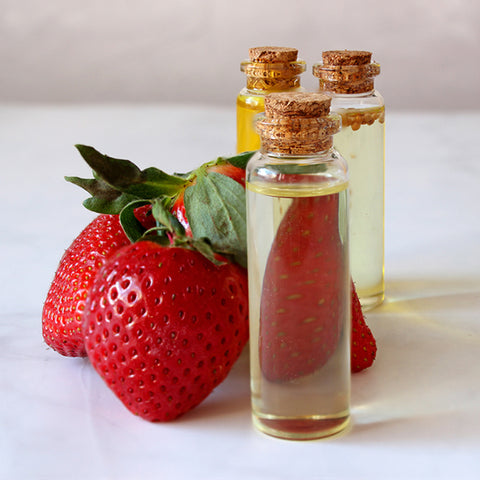Water Soluble Flavors Vs Oil Soluble Flavors - Which is Better ?
When it comes to flavoring our favorite meals and products, there are two sorts of flavorings to choose from: water-soluble flavors and oil-soluble tastes. Each type has distinct properties and benefits, making it suited for various applications.

Both water-soluble and oil-soluble flavors are similar in many ways, but they differ a lot, especially regarding their use. Keep reading to find out. This comprehensive guide will examine the differences between different flavoring alternatives, including their composition, features, applications, and considerations.
Understanding Water-Soluble Flavors: Composition and Properties
Water-soluble tastes are those that distribute and blend well with water-based substances. They comprise flavoring compounds encapsulated in water-soluble carriers, allowing them to be easily incorporated into various aqueous mediums. These tastes are typically sourced from natural or synthetic sources and are meticulously crafted to guarantee optimal flavor dispersion.

Their primary characteristics are high water solubility, fast taste release, and adaptability in various applications.
Understanding Oil-Soluble Flavors: Composition and Properties
Unlike water-soluble flavors, oil-soluble tastes are intended to be compatible with oil-based compounds. These tastes use lipid-based carriers that dissolve quickly in fats, oils, and other hydrophobic media. Oil-soluble flavors' lipophilic nature allows for increased stability and more extended flavor release, making them appropriate for products with a high-fat content. Their features include excellent dispersion in oil, extended flavor intensity, and compatibility with lipid-based components.

Why Use Water-Based Food Flavoring?
The desire for water-based food flavoring stems from its ability to diffuse equally in aqueous solutions, resulting in a consistent flavor experience. This property makes water-soluble tastes appropriate for various applications, ensuring uniform distribution and integration into varied culinary creations.
What Applications Are Water-Soluble Flavors Most Commonly Used In?
Water-soluble flavors are widely used in a wide range of applications. Because of their propensity to effortlessly integrate with water-based ingredients, they are a popular choice for beverages such as flavored waters, juices, sodas, and sports drinks.
They are also commonly used in bakery products such as cakes, cookies, and pastries, where their rapid flavor release assures uniform flavor throughout.
Water-soluble tastes are also often employed in dairy goods, confectioneries, and syrups, imparting a flavor burst to these exquisite delights. Water-soluble flavors are usually used in making Beverages such as tea, smoothies, spirits, beer, wine, sparkling water, wine and coffee.
They are also used in baked goods such as cookies, brownies, and cakes to flavor frosting, condiments, candy centers, vinegar, jams and jellies, and other supplements.
Why Use Oil Soluble Food Flavoring?
Oil-soluble food flavoring is essential in applications where lipids predominate, ensuring compatibility with fats and oils. Because of this, oil-soluble tastes are essential for generating a pleasant and long-lasting taste experience in lipid-rich surroundings.

What Applications Are Oil Soluble Flavors Most Commonly Used In?
In applications including fatty or oil-based components, oil-soluble flavors are preferred. These flavors enhance the flavor of chocolates, candies, cookies, and snack foods. Their compatibility with fats and oils means that flavors are distributed evenly within these decadent delicacies.
Furthermore, oil-soluble flavors are widely used to manufacture sauces, dressings, and savory snacks, where their longer-lasting flavor release and heat resistance give a consistent and powerful flavor experience. Use this Flavor oil in Flavored Oils for Food, Baked Goods, Hard Candies, Gummies, Ice cream, Salad dressing, Roasting Nuts, Pastas, and Sauces.
Differences & Similarities
While water-soluble and oil-soluble tastes have different compatibilities with water and oil, both can offer intense and stable flavor profiles. So, what is the most straightforward approach to learning about the flavors? Is the flavor oil-soluble or water-soluble? It is pretty simple. You only need to look at the flavoring ingredients list. If the solvent is ethanol, it will dissolve in water. It is oil-soluble if it is salad oil.

It's oil-water if it's propylene glycol. Flavors that are water-soluble and oil-soluble can be used to flavor chocolate candy centers and beverages. The choice between them is frequently determined by the unique needs of the culinary application, with water-soluble tastes excelling in hydrating settings and oil-soluble flavors flourishing in lipid-rich matrices.
Conclusion
In conclusion, the dynamic interplay of water-soluble and oil-soluble tastes is a pillar of culinary innovation. Whether boosting beverages with water-based tastes or enriching baked items with oil-soluble counterparts, each form of flavoring contributes to the gourmet tapestry in its distinctive way. Understanding these flavors' composition, qualities, and applications enables chefs and food scientists to create culinary experiences that tantalize the taste senses and elevate culinary creations to new heights.
You May Also Like:
Buy Products
Related Articles
-
 DIY Hair Pomade - Easy Homemade Recipe With & Without Beeswax
DIY Hair Pomade - Easy Homemade Recipe With & Without Beeswax -
 DIY Glycerin Moisturizer – 3 Natural Homemade Recipes For Face
DIY Glycerin Moisturizer – 3 Natural Homemade Recipes For Face -
 DIY Cleansing Oil - Best Homemade Recipe For All Skin Types
DIY Cleansing Oil - Best Homemade Recipe For All Skin Types -
 How to Make Marble Candles | DIY Marble Pillar Candle
How to Make Marble Candles | DIY Marble Pillar Candle -
 DIY Tanning Oil - Best Homemade Recipes For Tan Removal
DIY Tanning Oil - Best Homemade Recipes For Tan Removal -
 Homemade Mustache Wax: Best DIY Recipe With Natural Ingredients
Homemade Mustache Wax: Best DIY Recipe With Natural Ingredients
Disclaimer :- This article is intended for informational and educational purposes only and should not be considered a substitute for professional medical advice. For specific health concerns or treatment, please consult your personal physician. The article's editor, writer, and VedaOils organization do not assume any responsibility for any health outcomes resulting from the information provided. Readers are strongly encouraged to seek advice from their physician before acting on any recommendations made in these articles.
















 Sign in
Sign in Register now
Register now My Reward Points
My Reward Points









